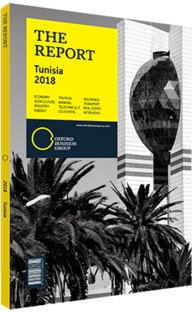Tunisia making efforts to enhance non-conventional insurance product lines
Historically dominated by the motor segment, the sector is now aiming to further develop its varied products and distribution channels, particularly life insurance, takaful (Islamic insurance), bancassurance and micro-insurance, with the goal of doubling its GDP contribution to 4% between 2017 and 2022.
“The insurance sector has various roles to play in the development of the local economy, including the mobilisation of savings to finance large infrastructure projects, such as hotels or factories,” Mohamed Dkhili, CEO of GAT Assurances, told OBG. “Insurance companies also invest in the stock market, in real estate securities and can play a stronger role in financing the budget deficit.” To help the sector reach its full potential, both in terms of growth and as an institutional investor, the regulator and insurance companies are implementing changes that should lead to higher penetration.
Growing Lines
Alternative product lines, such as life insurance, show significant room for growth. “Life insurance is an underexploited segment, accounting for around 20% of the market,” Dkhili said. “The existing potential is big, with new product offerings available for individuals.” In the third quarter of 2017 life premiums registered year-on-year growth of 29.2%. However, the latest data available showed that its penetration rate remains relatively low, at 0.43% of GDP in 2016, compared to 1.4% in Morocco and 3.9% in Europe.
Since its launch in 2013, takaful has also enjoyed strong and consistent expansion, recording an average annual growth rate of 56.3% between 2014 and 2016. “Takaful has been growing steadily, at a much greater pace than traditional insurance,” Mondher Khabcheche, deputy director-general at Assurances At-Takafulia, told OBG. “Yet the development of takaful companies will depend on their ability to generate volumes through clients such as small and medium-sized enterprises, which are under-represented in traditional insurance.”
Furthermore, Khabcheche said that 2017 marked the end of an informal agreement made in segments such as fire and miscellaneous risks, whereby companies consented to a floor price for similar contracts in order to help insurers handle increased levels of claims in the wake of the 2011 revolution. This change in the market should allow new businesses to attract more clients through competitive pricing.
Although still in their infancy, micro-insurance and index-based agricultural insurance are likely to contribute to the diversification of the sector in Tunisia, starting with the development of a new legal framework that will regulate those two types of insurance products under a new insurance code. The code is currently being developed by the sector regulator, the General Insurance Committee.
Changes Ahead
Despite the sector’s potential for more diversified insurance premium and a higher penetration rate, a number of challenges still need to be addressed. “The insurance sector in Tunisia suffers from a negative perception as a result of unpaid claims in the automotive segment,” Dalila Bader, director-general of Assurances Salim, told OBG. “Tunisians are thus sceptical of all other insurance products.”
According to Hassène Feki, general manager of Société Tunisienne d’Assurances et de Réassurances, in order to develop activities away from the motor segment, insurance companies must improve the quality of their service, particularly for mandatory insurance, which will in turn incentivise Tunisians to consume non-mandatory products as well.
The new insurance code, which is expected to be implemented by the end of 2018, aims to address the sector’s most pressing concerns. “Priorities for the insurance sector include separating life and non-life segments, and ensuring proper risk management within companies,” Bader told OBG.
Additionally, the sector regulator is looking to enhance non-conventional distribution channels, including bancassurance, and to this end also plans to revise the bancassurance framework sometime in 2018.
You have reached the limit of premium articles you can view for free.
Choose from the options below to purchase print or digital editions of our Reports. You can also purchase a website subscription giving you unlimited access to all of our Reports online for 12 months.
If you have already purchased this Report or have a website subscription, please login to continue.

